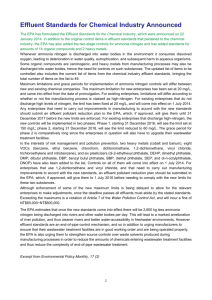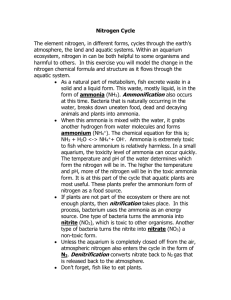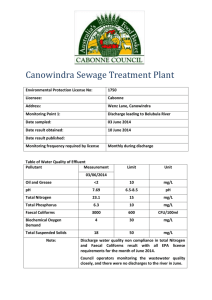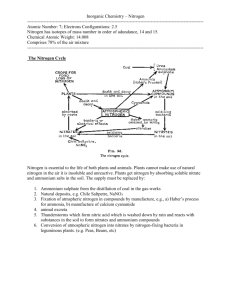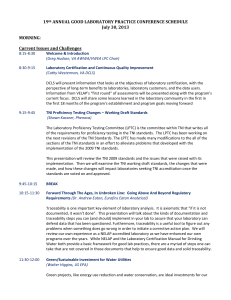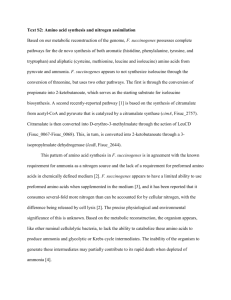Effluent Discharge Standards Announced for Phototronics Industry
advertisement
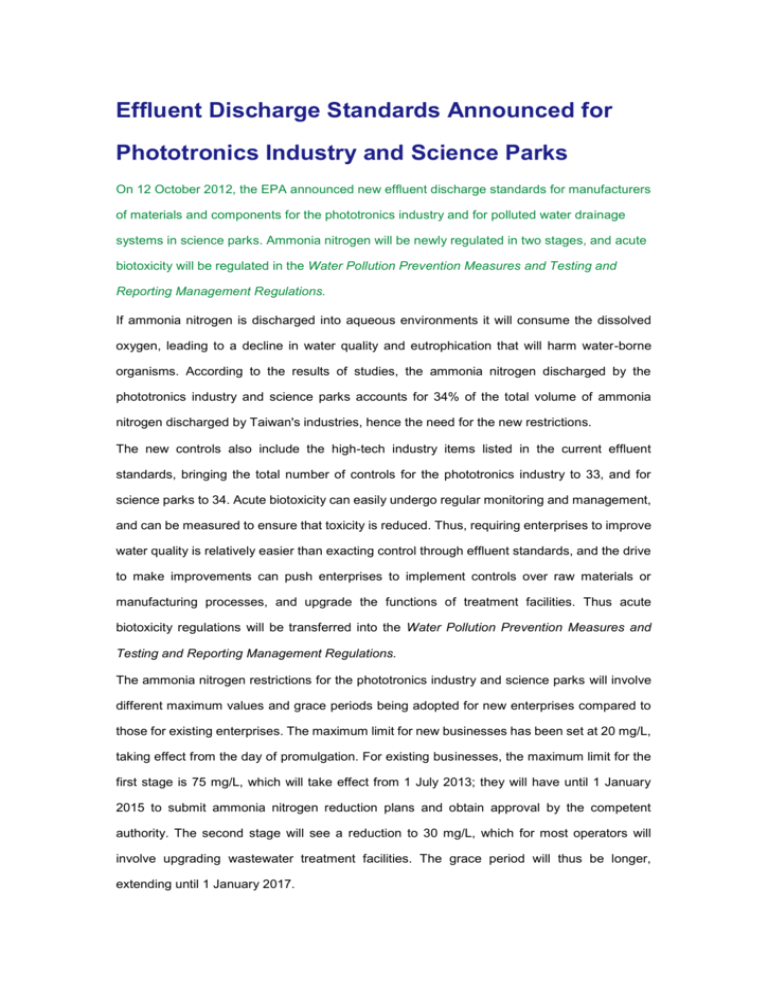
Effluent Discharge Standards Announced for Phototronics Industry and Science Parks On 12 October 2012, the EPA announced new effluent discharge standards for manufacturers of materials and components for the phototronics industry and for polluted water drainage systems in science parks. Ammonia nitrogen will be newly regulated in two stages, and acute biotoxicity will be regulated in the Water Pollution Prevention Measures and Testing and Reporting Management Regulations. If ammonia nitrogen is discharged into aqueous environments it will consume the dissolved oxygen, leading to a decline in water quality and eutrophication that will harm water-borne organisms. According to the results of studies, the ammonia nitrogen discharged by the phototronics industry and science parks accounts for 34% of the total volume of ammonia nitrogen discharged by Taiwan's industries, hence the need for the new restrictions. The new controls also include the high-tech industry items listed in the current effluent standards, bringing the total number of controls for the phototronics industry to 33, and for science parks to 34. Acute biotoxicity can easily undergo regular monitoring and management, and can be measured to ensure that toxicity is reduced. Thus, requiring enterprises to improve water quality is relatively easier than exacting control through effluent standards, and the drive to make improvements can push enterprises to implement controls over raw materials or manufacturing processes, and upgrade the functions of treatment facilities. Thus acute biotoxicity regulations will be transferred into the Water Pollution Prevention Measures and Testing and Reporting Management Regulations. The ammonia nitrogen restrictions for the phototronics industry and science parks will involve different maximum values and grace periods being adopted for new enterprises compared to those for existing enterprises. The maximum limit for new businesses has been set at 20 mg/L, taking effect from the day of promulgation. For existing businesses, the maximum limit for the first stage is 75 mg/L, which will take effect from 1 July 2013; they will have until 1 January 2015 to submit ammonia nitrogen reduction plans and obtain approval by the competent authority. The second stage will see a reduction to 30 mg/L, which for most operators will involve upgrading wastewater treatment facilities. The grace period will thus be longer, extending until 1 January 2017. The EPA estimates that once the new standards come into effect, there will be a reduction of up to 16,000 kg per day in the volumes of ammonia nitrogen being discharged into Taiwan's rivers. This should make an observable improvement to the river pollution index (RPI), and lead to cleaner rivers and increased recreational activity in freshwater environments. Since effluent discharge standards are a tail-end control mechanism, the EPA is also urging enterprises to ensure that their wastewater treatment facilities are operating properly and at maximum efficiency. They are also being asked to strengthen control over the creation of waste solvents at their source. These measures are all designed to reduce the amounts of chemicals entering wastewater treatment facilities and hence make treating final-stage wastewater less complicated. Excerpt from Environmental Policy Monthly, 15 (11)
